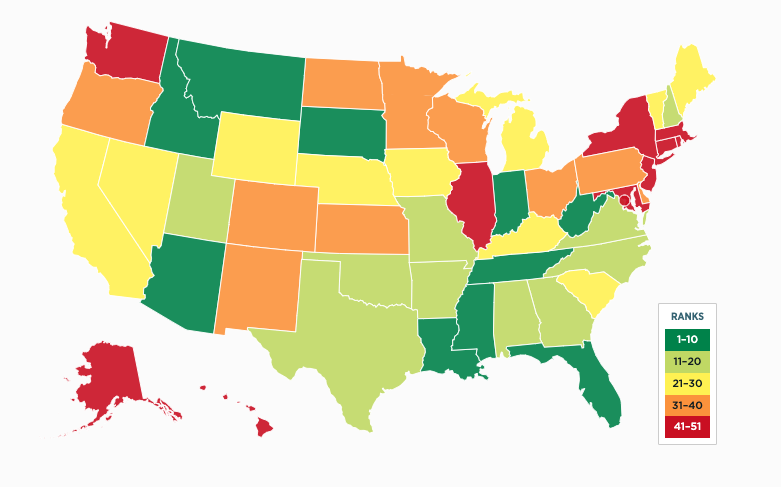Minnesota ranked 39th for education freedom
Minnesota has work to do to provide more transparency, accountability, and education choice to its families, according to a new report card by The Heritage Foundation.
The Education Freedom Report Card measures four broad categories (Regulatory Freedom, School Choice, Spending, and Transparency) to assess education freedom in each state. Minnesota ranked at the lower end, coming in 39th overall. Below are highlights from the different variables hat contributed to the state’s overall ranking. Read the full methodology here.
Regulatory Freedom
Minnesota ranks 42nd for regulatory freedom. Contributing to this is the state’s barriers to teaching and the growth of non-teaching administrative staff, particularly chief diversity officers (CDOs). Minnesota does not allow full reciprocity of teacher licensure, only 6 percent of teachers entering the classroom through alternative certification routes, and an estimated 86 percent of school districts enrolling more than 15,000 students employ a CDO.
According to a report by Heritage’s Jay Greene and James Paul with the Educational Freedom Institute, CDOs “may be best understood as political activists who articulate and enforce an ideological orthodoxy within school districts.”
School Choice
Ranked 38th for school choice, Minnesota “could improve its ranking by establishing K–12 education savings accounts, making it easier for more charter schools to open and operate, removing excessive regulations on homeschooling families, and giving families more choices among traditional public schools.”
An education savings account bill has been introduced the past two legislative sessions, but Gov. Tim Walz, Democratic leadership and the teachers’ union stand in opposition, despite support coming from communities of color.
Spending
Minnesota ranks 31st in return on investment (ROI) for education spending. At $16,234 in cost-of-living-adjusted terms, the state spends the 19th most per pupil among states. Minnesota’s unfunded teacher pension liability (at 4.3 percent of the state’s GDP) and its growth in non-teaching staff (the state employs 0.84 public school teachers for every non-teacher) also contribute to its ROI ranking.
Read more about Minnesota’s ROI for education spending here.
Transparency
Minnesota ranks 28th for transparency, as lawmakers “have not adopted proposals to increase academic transparency or that reject the prejudice caused by the application of critical race theory in schools.”
Legislation aimed at syllabus disclosure and informing parents of their right to review instructional materials and seek alternative instruction passed the Minnesota Senate last session.
_________________
Florida is the top-ranked state, followed by Arizona at #2 (the recently expanded and now universal ESA program in the state will be factored into next year’s ratings). Idaho came in third, largely due to high rankings for taxpayers’ ROI with education spending and transparency to parents. New Jersey, New York, and the District of Columbia ranked 49th, 50th, and 51st, respectively, as they struggle to provide transparency, accountability, and choice to families.
Click on the picture below to view the interactive map and see each state’s rankings.
